How-To Guides
How to repair a washer not spinning?
AZparts Team
Updated on July 11, 2025
7 min read
A washer that won’t spin is a fairly common issue, often causing inconvenience in daily life when clothes remain soaking wet after a wash cycle. This problem can stem from various causes, from user errors such as overloading or unbalanced laundry, to internal component failures like a faulty lid switch, broken drive belt, or clogged drain pump filter. In this article, AZParts will help you identify the exact cause and guide you through effective solutions so you can get your washer back up and running without needing to call a technician right away.

1. Signs That Your Washer Won't Spin
- Clothes remain soaking wet after the wash cycle: This is the most noticeable sign that the washer either didn’t perform or didn’t complete the spin cycle.
- Drum doesn’t spin during the spin cycle: If you observe or open the lid after the cycle ends and the drum hasn’t moved, the spin cycle likely didn’t occur.
- Washer makes unusual noises or vibrates excessively: This could be due to an unbalanced load or a damaged component that prevents proper spinning.
- Washer stops mid-cycle or skips to another mode: Some machines may automatically skip the spin cycle if they detect an issue, such as an unlocked door or uneven load distribution.
- Error code appears on the display (if applicable): Modern washing machines often display error codes like UE, E3, or LE to indicate spin-related issues.
If you notice one or more of these signs, it’s likely that your washer is experiencing a spin system malfunction and the related components should be carefully inspected.
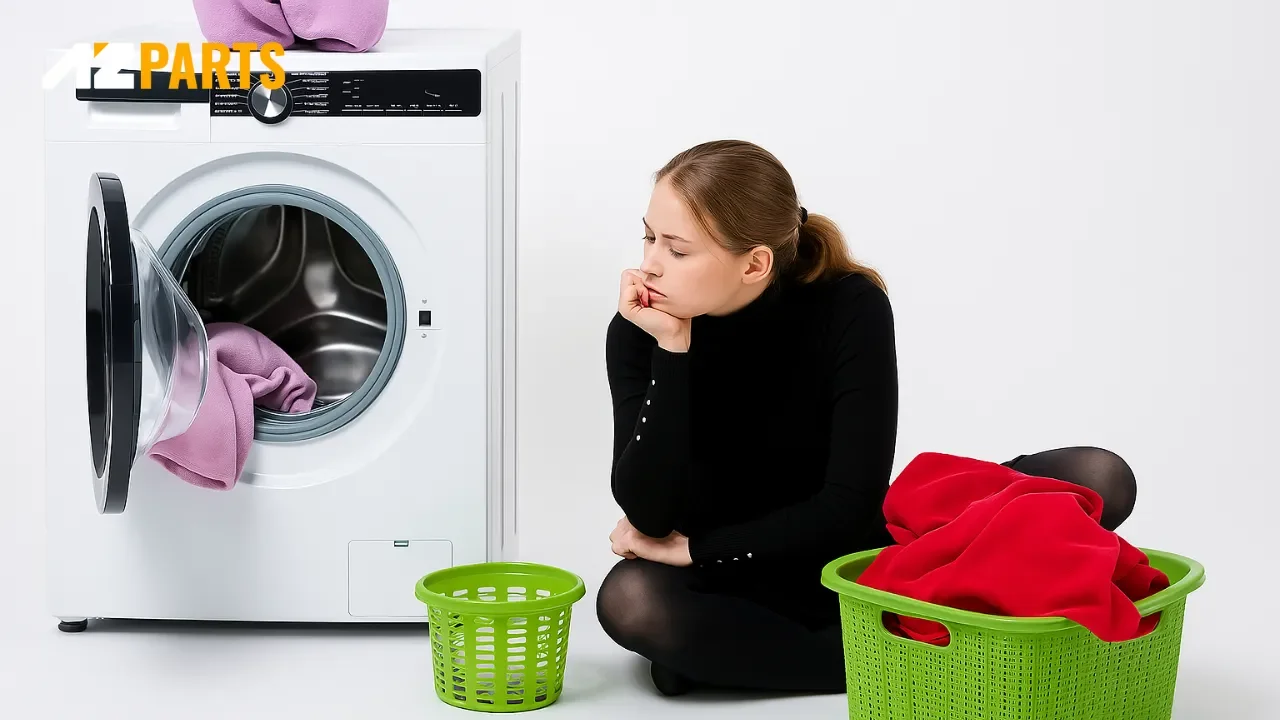
Clothes remain soaking wet signs that your washer won't spin (Source: AZParts)
2. Common causes for a washer not spinning properly
A washer that won’t spin is a common household issue that can interrupt your laundry routine and cause frustration. This problem may arise from a variety of reasons, from simple user errors like overloading, to mechanical faults inside the machine. Below are the most frequent causes you should check when your washer isn’t spinning as expected.
2.1. The Washer is Too Full
Loading too many clothes into the washer during one cycle can cause the drum to become overloaded, preventing it from spinning at the high speeds needed for the spin cycle. An excessive load can also put too much strain on the motor, causing it to shut off or reduce spin efficiency. To avoid this, follow your washer’s recommended load capacity, usually about 70 - 80% of the drum's total volume.
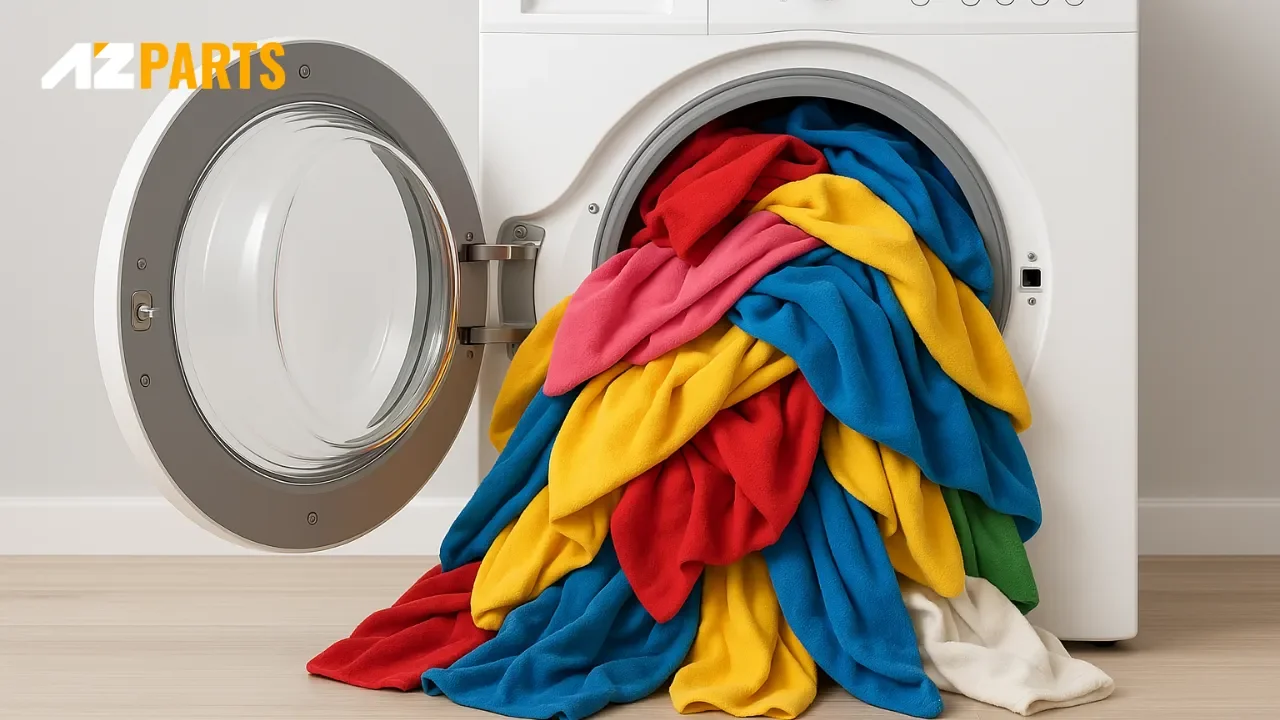
Loading too many clothes into the washer can cause it does not spin (Source: AZParts)
2.2. The Load is Imbalance
If clothes gather on one side of the drum, especially when washing bulky items like blankets or towels, the washer may become unbalanced during the spin cycle. Many modern washers detect imbalance and will stop or reduce spinning speed to prevent damage. To fix this, open the washer, redistribute the load evenly, and restart the spin cycle.
2.3. The Washer isn’t Balanced
A washing machine must be placed on a flat, stable surface to operate properly. If the unit is tilted or its legs are uneven, it may shake, produce loud noises, or stop spinning to avoid further damage. Use a level tool to check the balance of the machine and adjust its feet accordingly.
2.4. The Malfunctioning Lid Switch
The lid lock switch is an important safety component that ensures the washer does not spin when the lid or door is open. If this switch is damaged, stuck, or fails to send the correct signal to the control board, the washer may refuse to begin or complete the spin cycle. This is a relatively common problem and often one of the first components to check when your washer suddenly stops spinning.
If the washer lid lock switch is identified as the cause, replacing it with the right part is essential. AZParts provides a wide selection of lid lock switch replacements that are compatible with many washer models. Using a quality part ensures the washer can detect a securely closed lid and resume normal operation without interruptions.
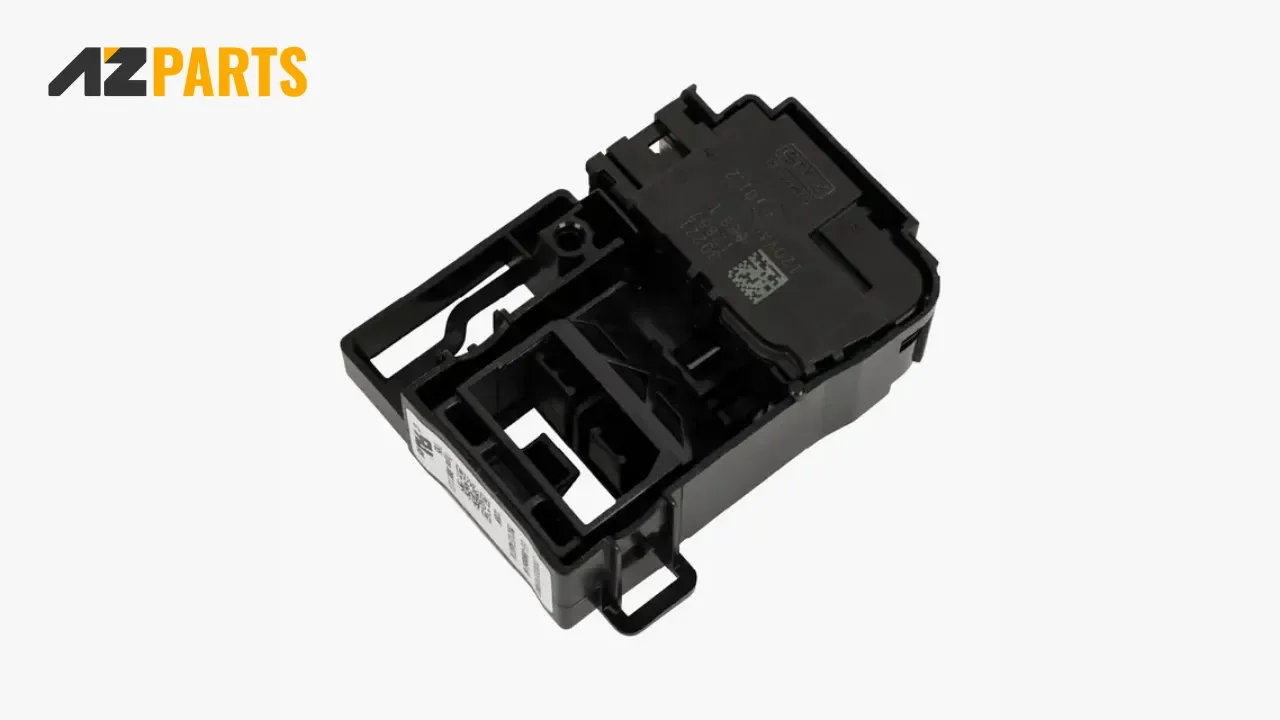
If the lid lock switch is identified as the cause, replacing it with the right part is essential (Source: AZParts)
2.5. The Drive Belt Is Broken
The washer drive belt plays a vital role in connecting the motor to the drum, allowing the washer to spin during both the wash and spin cycles. Over time, the belt can stretch, wear out, or snap completely. When this happens, the drum will remain still even though the motor continues to run. This issue is especially common in belt-driven washer models and can significantly reduce washing efficiency.
To restore spinning functionality, the drive belt should be replaced with a model that fits your washer's specifications. AZParts offers durable and OEM-compatible drive belts for a variety of washer brands, making it easier to find the right replacement and ensure your washer operates smoothly again.
2.6. The Drain Pump Filter Is Clogged
The drain pump filter is designed to catch lint, fabric fibers, hair, and small debris during the wash cycle. Over time, this filter can become clogged, blocking water from draining out of the drum. When the washer detects that water remains inside, it may cancel or skip the spin cycle to avoid damaging the motor or internal components. This is a common issue, especially if the filter has not been cleaned regularly.
If cleaning the filter does not resolve the problem or if the filter is damaged, it may need to be replaced. AZParts offers a variety of washer pump filters that are designed to match specific washer models. Ensuring proper drainage and helping your machine complete the spin cycle effectively.
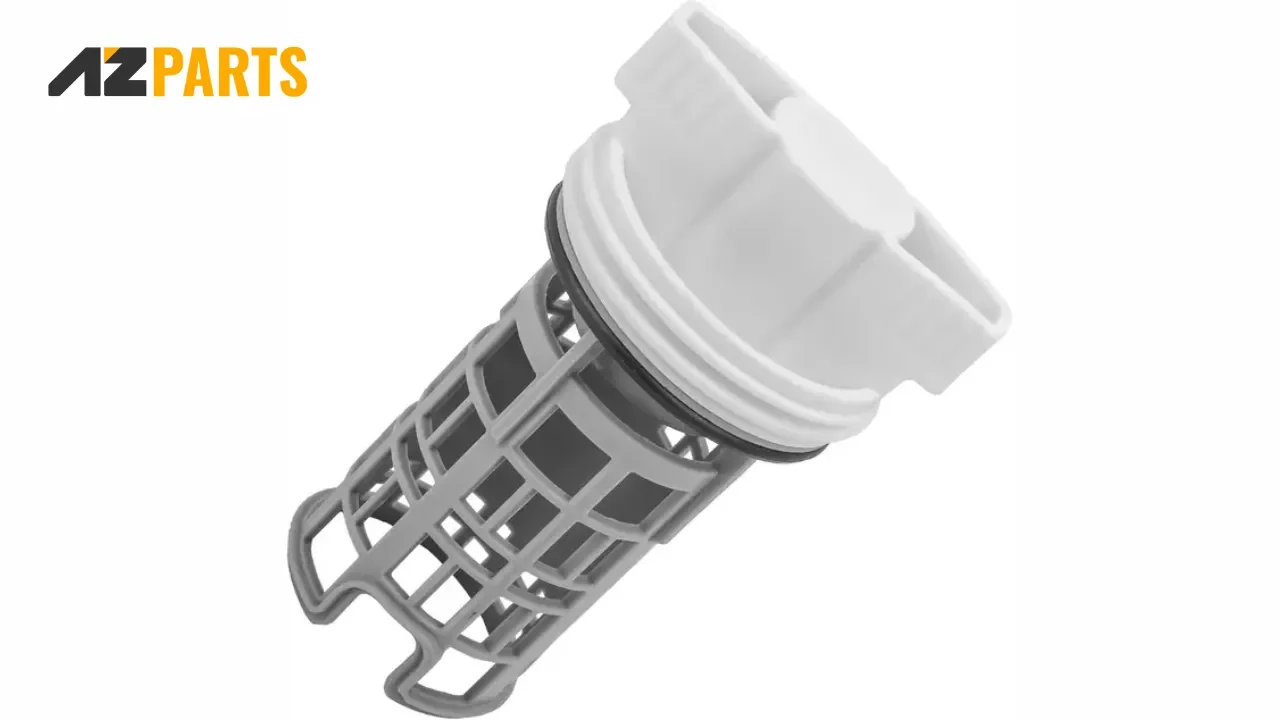
The drain pump filter is designed to catch lint, fabric fibers, hair, and small debris during the wash cycle (Source: AZParts)
2.7. The Door Lock Is Broken
In front-loading washers especially, the door must lock securely before the spin cycle begins. If the door lock is broken or the sensor fails to detect a locked state, the washer will not spin as a safety precaution. A malfunctioning lock may need to be inspected and replaced to restore normal operation.
2.8. The Motor Has Failed
The motor is the core component that drives the spinning action. If it becomes damaged due to electrical failure, worn brushes, or overheating, the washer may be completely unresponsive during the spin cycle. Diagnosing and repairing motor issues typically requires professional assistance, though in some cases, replacing worn components may be enough.
Understanding these common causes can help you troubleshoot and resolve the issue without unnecessary delays. And when a part does need replacing, trusted suppliers like AZParts offer a wide selection of quality washer parts to help get your appliance spinning smoothly again.
3. Tips to Make Sure Your Washer Spins effectively
- Avoid overloading the washer: Always follow the manufacturer's recommended load capacity. Overloading can reduce spin performance and place unnecessary strain on the motor.
- Distribute laundry evenly: Ensure clothes are spread evenly inside the drum to keep the washer balanced during spinning. Uneven loads can cause vibration and prevent proper spinning.
- Check the washer's balance: Place the washer on a level and stable surface. Adjust the feet if needed to prevent tilting or shaking that could interfere with the spin cycle.
- Clean the drain pump filter regularly: Debris such as dirt, hair, or small objects can clog the filter and prevent water from draining properly. Clean the filter frequently to maintain effective spinning.
- Perform routine maintenance: Inspect and replace worn components like the drive belt, lid lock switch, or pump filter when necessary. Using high-quality replacement parts from AZParts can improve performance and prolong the machine’s life.

Tips to make sure your washer spins effectively (Source: AZParts)
Following these practices not only helps your washer spin more efficiently but also extends the overall lifespan of the appliance.
A washing machine that fails to spin is a common household issue. However, it is often something you can inspect and resolve yourself, provided you understand the underlying causes and know the appropriate steps to take. From properly arranging the laundry and ensuring the machine is placed on a level surface, to checking and cleaning essential components suitable for various models such as: Admiral washer parts, Crosley washer parts, LG washer parts, Whirlpool washer parts,... each of these actions contributes to better washer performance and greater reliability.
By staying proactive with maintenance and addressing minor issues early, you not only avoid costly repair services but also extend the lifespan of your washing machine. This ensures that your laundry routine continues smoothly and efficiently with minimal disruption.
Contact Information:
8 The Green, Ste A, Dover, Delaware 19901-3618, United States
Learn more about fixing common washer problems:
Washer
Further Reading
Further Reading

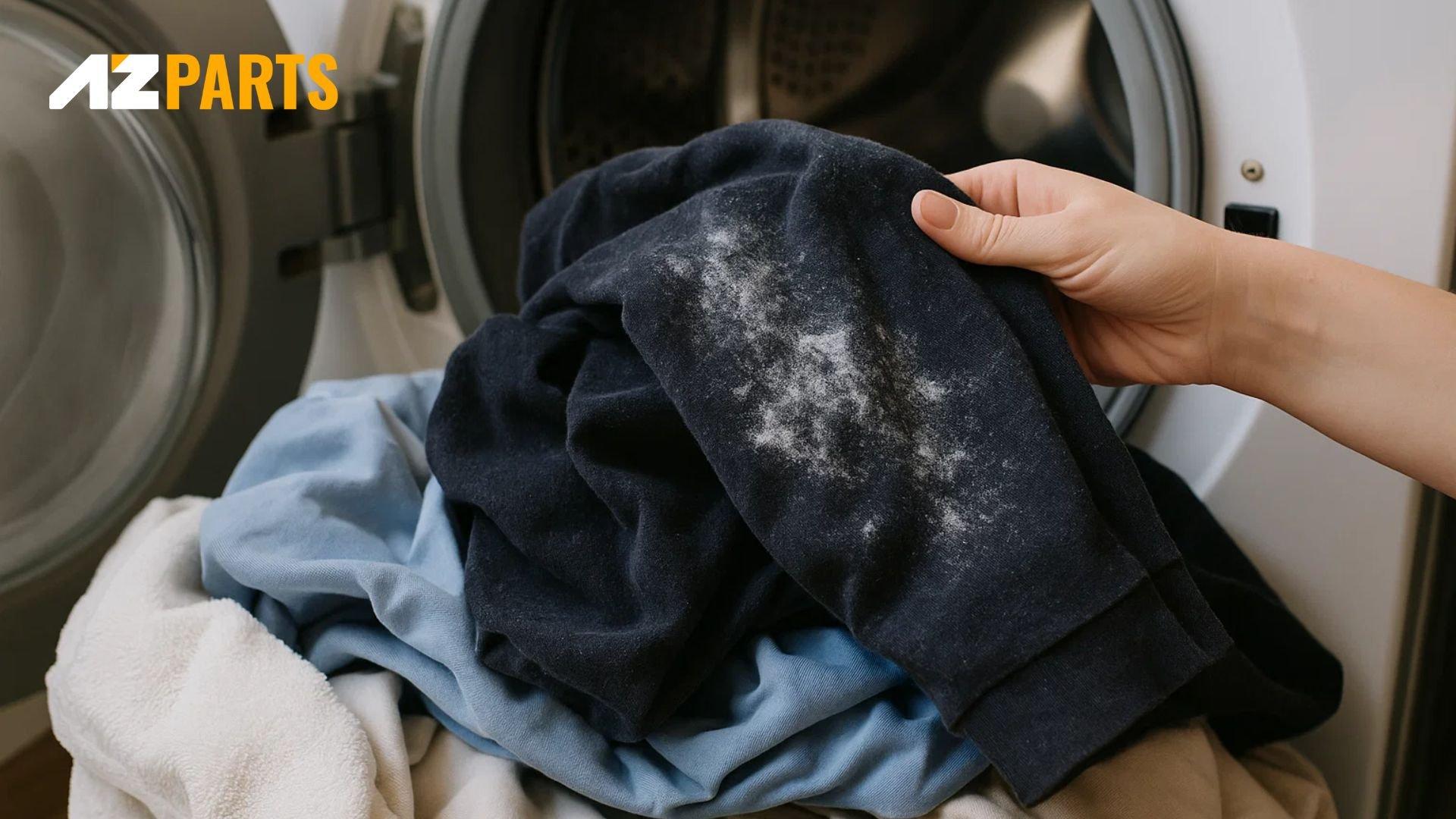



_1748341252.jpg&w=3840&q=75)